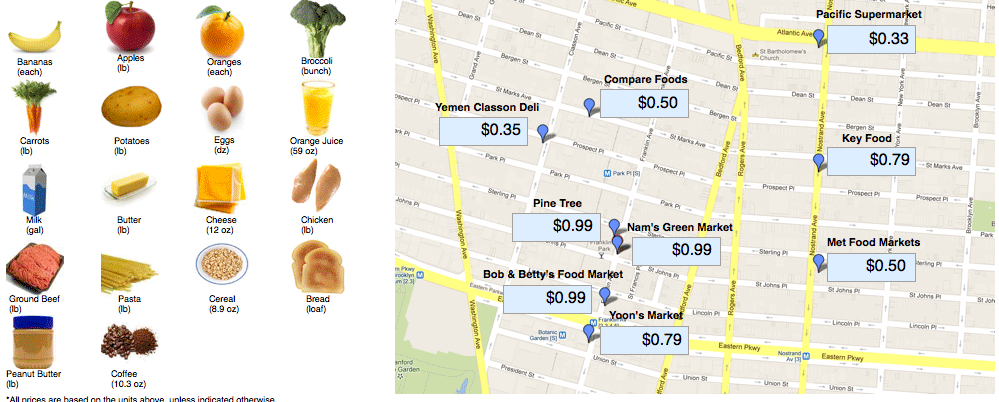Imagine you had to walk more than 10 minutes to find affordable, fresh produce for you and your family. According to the New York City Department of Health and Mental Hygiene, 1 percent of North and Central Brooklyn residents, about 3,000 people, said fresh fruits and vegetables were not available within a reasonable walking distance from where they live.
This plays out on the streets of Crown Heights, where residents living on a limited budget and working full-time jobs find themselves trapped between paying more for groceries at small specialty stores, or having to schlep to other neighborhoods to buy affordable food.
“There are pockets of Crown Heights that have access to better food, and there are pockets that don’t,” said Fran Miller, a member of the Crown Heights Food Share program.
“It’s gentrifying so there are more healthier stores, but still they’re expensive. For long-time residents of Crown Heights who don’t have a lot of money, and even the younger hipster types, it’s hard to fill your fridge with expensive produce,” Miller added.
A Long Trip
For Crown Heights resident Marielle Millette grocery shopping is not a neighborhood affair. On a recent Saturday, Millette and her son took the subway 20 minutes to the Trader Joe’s in Cobble Hill to shop for frozen vegetables, fresh fruits and seasonings.
“Feeding my family nutritional food on a scale of one to 10 is a 10. I was looking for fresh food that was affordable,” said Millette, 38.
Millette works from 8 a.m. to 6 p.m. each weekday as a child-care provider in Manhattan, and needs dinner preparation to be convenient and fast. Her husband, who works full time as a building superintendent, often pitches in to get dinner together. Though fresh produce is available at her nearest grocery store, Bob and Betty’s Food Market, the prices there are prohibitive, Millette said.
Bob and Betty’s Food Market owner Tony Fisher said that his pricing is based on industry standards and is at an acceptable price range.
“If you follow market trends, raw commodities are going up, from coffee, corn, and milk, and a slight rise in the cost of something like sugar trickles down into every facet of the food industry,” Fisher said.
When setting the prices for each of the 10,000 items he sells at Bob and Betty’s, Fisher factors in his overhead costs and the salaries and benefits of his employees, all of whom are Crown Heights residents.
“My employees are provided a living wage. For a business of this size, that’s a difference that my customers appreciate,” Fisher said.
Check out our grocery gallery above
Still, with more specialty stores like Bob and Betty’s opening in Crown Heights, lower-income residents could be left behind.
The Crown Heights Food Share program, a cooperative hopes to fill the gap by providing fresh produce at a lower cost. Membership costs about $25 a week, and every Thursday residents pick up their produce at a designated location.
For others, comparison shopping can help. We’ve compiled a cost-comparison map for several of the grocery stores along Franklin Avenue and Nostrand Avenue, in Crown Heights so readers can find the best prices for common grocery staples. These prices are accurate as of March 3, 2013.
If you have a more recent price report from a specific store, email your submission to [email protected].


